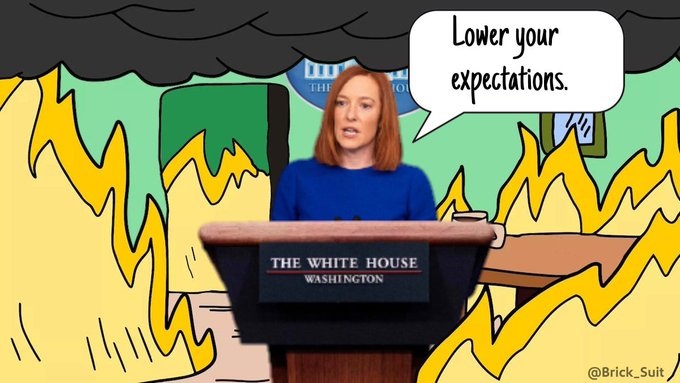America is in the midst of an education crisis, ranging from newborns to college students, and it is ubiquitous. In an under-reported story from August, a study by researchers at five universities found that babies born during the COVID pandemic show reduced verbal, motor, and overall cognitive performance.Babies who came into the world before the coronavirus had an IQ score averaging 100, but the test scores of those born during the pandemic fell sharply to around 78.
And those who were already out of the oven when COVID—and our overwrought reaction to it—became a reality are not in great shape either. Researchers from McKinsey found that by the end of the 2020-21 school year, students were, on average, four to five months behind where they have been in the past, and low-income and minority kids were disproportionately harmed in math and reading. Additionally, the latest American Family Survey, released in October, revealed that nearly 20 percent of parents said that their children’s grades worsened during the pandemic and nearly one-third reported declines in learning.
But wait, it gets worse. Even before the pandemic, reading achievement was going downhill. As reported by Hechinger, U.S. fourth graders in 2016 slid seven points on the Progress in International Reading Literacy Study (PIRLS), an international reading test. “Then, fourth and eighth graders—particularly eighth graders—posted lower scores on the 2019 National Assessment of Educational Progress (NAEP), a benchmark test that is taken every two years by both age groups.”
So, the question becomes, what can we do to right the ship? Sadly, those in charge are clueless, have a political agenda, are greedy, or all the above. One cohort wants to change the way we grade. Joe Feldman, a former teacher and administrator, and now an “educational grading consultant” has written “Grading for Equity.” In the book, Feldman asserts, “Our traditional grading practices have always harmed our traditionally underserved students.” He adds, “But now because the number of students being harmed was so much greater, it got people more aware of it and ready to tackle this issue.”
In other words, we need to grade on factors other than achievement. On cue, this has been picked up by the Los Angeles Unified School District, where guidance now says “academic grades should not be based on attendance, including unexcused absences, late work, engagement or behavior, which can be reflected in separate ‘citizenship’ or ‘work habits’ marks that do not count toward a student’s GPA.”
While some of the new L.A. guidelines are sensible, like letting students retake a test they may have failed the first time, most are quite damaging. Work habits and deadlines matter. Ignoring them or moving them into an amorphous grading area does a great disservice to the student. It certainly doesn’t prepare them for the real world, where lack of attention to these matters can result in job loss.
Perhaps the most glaring area for reform attempts is in math, and California is leading the way. In the proposed 2022 draft revision of the California Department of Education’s “Mathematics Framework,” the chapter on “Teaching for Equity and Engagement” includes this language: “Empowering students with mathematics also includes removing the high stakes of errors and sending the message that learning is always unfinished and that it is safe to take mathematical risks. This mind-set creates the conditions for students to develop a sense of ownership over their mathematical thinking and their right to belong to the discipline of mathematics.” The draft also suggests that math should not be colorblind, and that teachers should use lessons to explore social justice issues—by looking out for gender stereotypes in word problems, applying math concepts to topics like immigration, inequality, etc.
As John McWhorter notes, the above is an artful way of saying that “diverse” kids should not be “saddled with the onerous task of having to get the actual answers.” Accordingly, nearly 1,000 experts in math instruction and application have signed an open letter in which they trash the new proposed framework, maintaining it could devastate learning for the state’s 6 million kids in California’s public schools.
American history is in no better shape. With the advent of a state-mandated Ethnic Studies class in high school, the equity zealots in California are going to town. In an extended piece in the Los Angeles Times, Melissa Gomez details what will be on the menu in many school districts. For example, “Eurocentric history” is on the chopping block. The “insensitive use of their culture for sport team mascots,” the disastrous results of “settler colonialism,” etc., will be part of the curriculum. In keeping with the spirit of the times, one of the article’s featured teachers, Melina Melgoza, a high school teacher at the Edward R. Roybal Learning Center in Los Angeles, starts her class with “students completing a social-emotional learning check-in with their feelings.”
The miseducation continues right into college. Researchers have found that while grades and graduation rates are up on college campuses, student test scores do not warrant the increases. They explain that the probable reason for the disparity is quite simply grade inflation. “The recent policy focus on college completion rates seems a likely contributor to increases in average GPAs. As schools and departments face increased scrutiny and, in some cases, increased funding incentives, they may respond by increasing graduation rates. Changing standards of degree receipt is a low-cost way to increase graduation rates. And in fact, graduation rates increased sharply at public four-year schools and community colleges, which rely on tax dollars and can be affected by states’ performance-based funding rules.”
American students have been and continue to be egregiously short-changed due to a hysterical response to COVID, agenda-driven learning, the lowering of standards, and greed. Collectively, we all will suffer greatly for this dysfunctional state unless changes are made in a hurry. If not, our country will be unrecognizable in the not-too-distant future.










